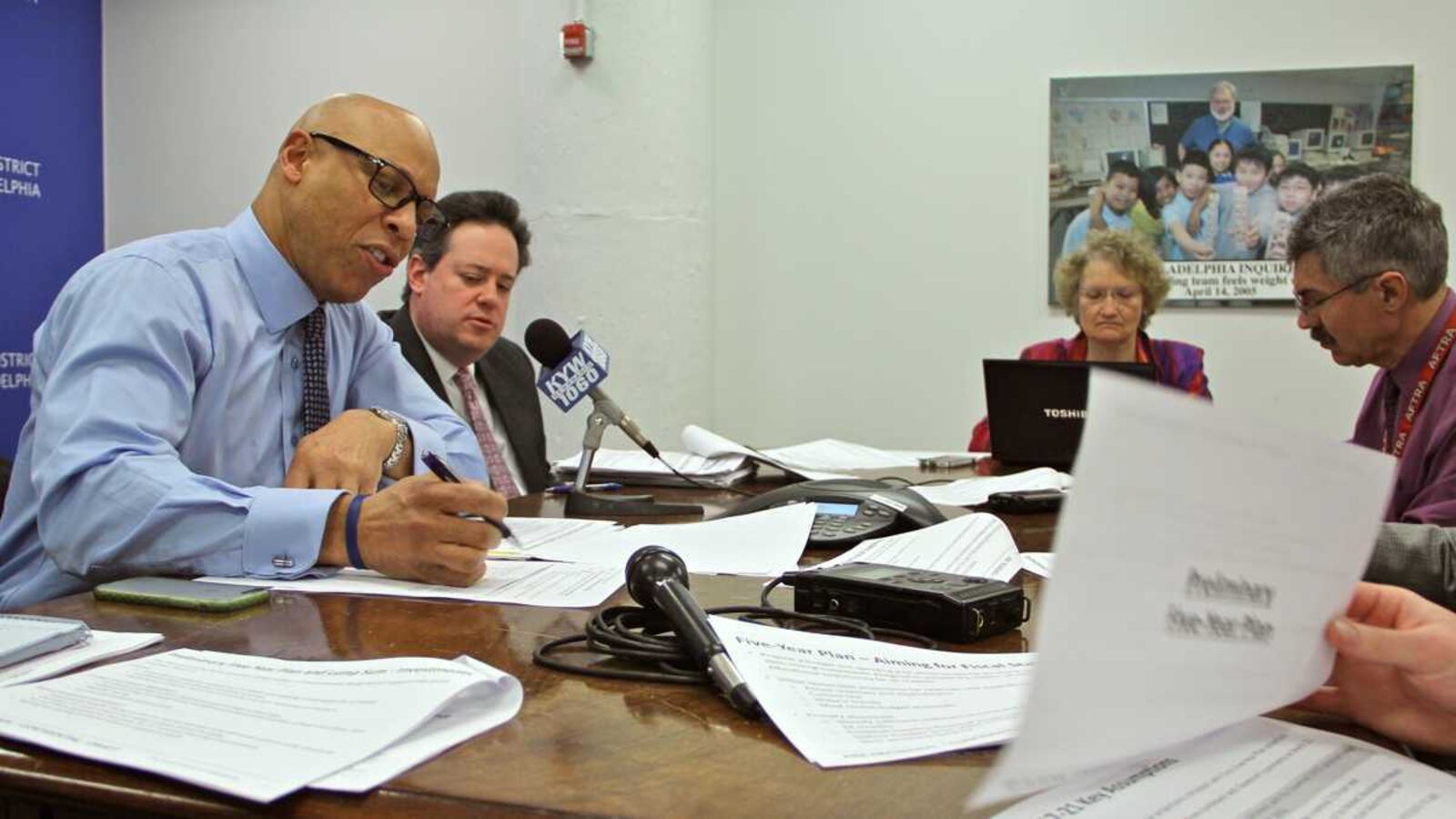This article was originally published in The Notebook. In August 2020, The Notebook became Chalkbeat Philadelphia.
The School District of Philadelphia last week adopted a plan that calls for $440 million worth of new investments over five years.
The long-term blueprint is contingent, though, on Gov. Wolf getting his way in the next state budget cycle.
Uncertainty remains about the amount of money the District will receive from Pennsylvania this year.
The District anticipates a $52 million boost, but Wolf may try to unilaterally increase that figure by using a distribution formula of his own design. Republican lawmakers say he actually lacks the authority to release any new money because he vetoed the fiscal code bill.
For next year, the District expects the state to give it an additional $80 million — which reflects Wolf’s stated goal.
Given that the governor’s priorities for last year’s budget haven’t come to fruition, Superintendent William Hite agreed that it’s a risky proposition, but balked at the alternative.
"We don’t have another proposal, and so we can’t even go halfway," he said. "There’s one proposal. That’s the proposal we’re using."
The new investments that the District plans include updated supplies and classrooms, school turnaround efforts, a nurse in every school, and a new contract with the teachers’ union.
One of the other key assumptions built into the District’s five-year plan is the need to close three District schools annually starting in the 2017-18 school year.
Hite may adjust that recommendation if District enrollment continues to trend upward, but he said the planned course is smart fiscal practice.
"And that is to keep from having to get to a place where we’re making recommendations for 39 schools, like I had to do in 2012-2013," he said.
Hite called it a natural consequence of approving new charter schools in a time when the city’s public school population has steadily hovered around 200,000 kids.
Since state legislation forced the District to end its moratorium on new charter expansion in 2014, the School Reform Commission has approved nine charters.
Between these and the natural growth of the rest of the sector, the District expects 10,000 more city charter students in the next five years.
Hite said he hopes to stem the tide of students leaving for charters by opening new schools, pursuing school turnarounds and redesigns.
"All of this was to offset the large number of children who were migrating from the District into charters, but the way to do that is to make our schools better," he said.
In 2012 and 2013, the District ultimately closed 30 schools — a move that SRC member Feather Houstoun characterized as a painful, yet necessary, reaction to decades of enrollment declines.
"I think that people felt that was tremendously destructive and hard on people in large numbers and that we shouldn’t do that. [Instead] we should be watching capacity as it develops over time, but then making hard decisions should that materialize," she said.


